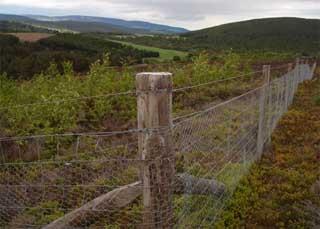Can Deer Management Help Control Ticks and Tick-borne Diseases?
Published on 24 February 2014 in Sustainability and Communities , Food, health and wellbeing

Introduction
Ixodes ricinus ticks are now recognised to be a serious and increasing problem in Scotland, as they can transmit Borrelia burgdorfi, the agent of Lyme borreliosis, to humans, and louping ill virus, which kills sheep and red grouse, animals crucial to the economic sustainability of rural Scotland.
Deer are the most important host to ticks in Scotland, and many scientific studies globally have documented higher tick numbers where there are more deer. Importantly, recent mathematical models have predicted that tick control strategies (such as culling mountain hares or treating sheep or deer with acaricide) are likely to be ineffective if there are even quite low densities of deer in the area. In addition, both roe and red deer are thought to have increased in both distribution and abundance in many parts of Scotland in the last few decades, and deer abundance and management has become a politic issue.
Therefore, we tested, using field experiments and surveys, whether managing deer (by culling or excluding them using fencing) could be an effective method to control ticks, and therefore mitigate against risk of Lyme borreliosis and other tick-borne diseases, for humans, livestock and game birds.
Key Points
We tested the impact on ticks of deer culling strategies and exclusion using fencing, at a range of spatial scales and on both moorland and forest.
Areas with very few deer (highly intensive culling strategies) had up to 94% fewer ticks than did areas that allowed high densities of deer.
Areas using fencing had up to 96% fewer ticks than matching areas without fencing.
This study neatly illustrates that intensive deer management (culling or fencing) can perform the roll of highly successful tick control.
Research Undertaken
To investigate the effect on ticks of different intensities of culling deer we conducted surveys at 55 moorland and forest sites with different deer management intensities. To investigate the effect of exclusion using fencing, we used field experiments with fenced and unfenced plots (see photo above). This was done at a deer farm with very high deer densities (>40 km-2) and two sporting estates with typical deer densities (8-10 km-2). We also surveyed ticks in large areas of forestry that were unfenced and fenced to exclude deer.
Areas with very few deer (highly intensive culling strategies) had between 73% and 94% fewer ticks than did areas that allowed high densities of deer.
Areas using fencing to exclude deer had between 86% and 96% fewer ticks than matching areas without fencing (see PDF file Figure 1: Tick abundance in fenced and unfenced areas 46 KB).
No areas had zero ticks, even areas with excellent deer fencing. This was either because of a deer being trapped within the fenced area at the time of fencing or, more commonly, because of alternative tick hosts (such as birds, small mammals, squirrels etc.) that could gain access to fenced areas.
The results are very clear that more deer result in more ticks, and that deer management can be used for controlling ticks. Excluding deer using high quality fencing or long-term intensive culling management result in similarly dramatic reductions in low tick abundance.
This research was funded by the Scottish Government. These results are published in the journal Ecological Applications: Gilbert, L., Maffey, G.L., Ramsay, S.L. and Hester, A.J. 2012. The effect of deer management on the abundance of Ixodes ricinus in Scotland. Ecological Applications 22, 658–667.
Policy Implications
- These results have strong implications for policy on tick-borne disease control and policy on deer management.
- There are far fewer ticks, implying far lower disease risk, where deer are not abundant, such as areas with intensive culling strategies or areas fenced to exclude deer.
- The implications are that deer and tick-borne disease management could go hand-in-hand.
Author
Dr Lucy Gilbert, James Hutton Institute lucy.gilbert@hutton.ac.uk
Topics
Sustainability and Communities , Food, health and wellbeing





